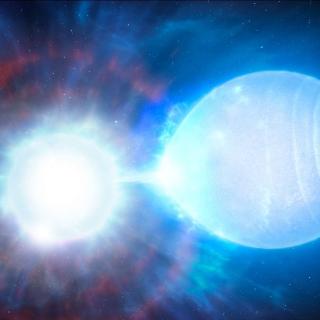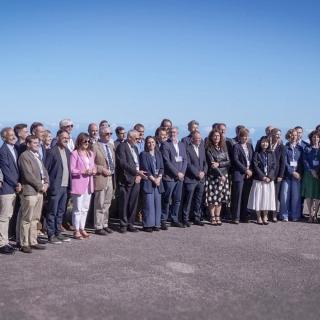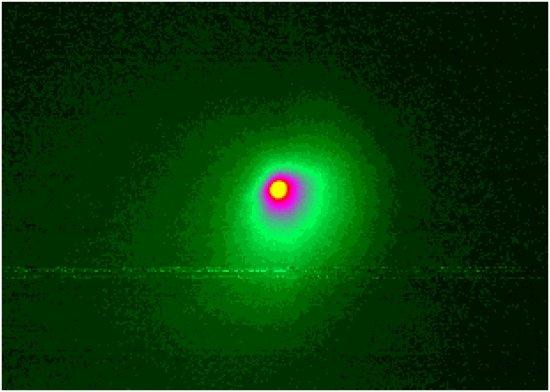It may interest you
-
 A study published today in Nature Astronomy , in which a researcher from the IAC has participated, outlines the discovery of an extremely rare type of binary system composed of two high mass white dwarfs. The two stars are so close together that they will eventually collide resulting in a supernova explosion which, due to its proximity to the Earth, will appear ten times brighter than the Moon. Type 1a supernovae are a class of cosmic explosion often used as "standard candles" to measure the expansion of the Universe. They occur when a white dwarf exceeds the Chandrasekhar mass - the limitAdvertised on
A study published today in Nature Astronomy , in which a researcher from the IAC has participated, outlines the discovery of an extremely rare type of binary system composed of two high mass white dwarfs. The two stars are so close together that they will eventually collide resulting in a supernova explosion which, due to its proximity to the Earth, will appear ten times brighter than the Moon. Type 1a supernovae are a class of cosmic explosion often used as "standard candles" to measure the expansion of the Universe. They occur when a white dwarf exceeds the Chandrasekhar mass - the limitAdvertised on -
 La Palma acoge durante tres días DiploInnova, un programa de Presidencia del Gobierno de Canarias organizado con la colaboración del IAC El presidente de Canarias, Fernando Clavijo, resaltó, esta mañana en el Roque de los Muchachos, en La Palma, el papel de Canarias en la resolución de los desafíos del planeta a través de la ciencia en la inauguración del programa DiploInnova , una jornada de diplomacia científica que busca posicionar a las islas en el ámbito internacional, dedicada en esta ocasión a la Astrofísica y el Espacio. Para Clavijo, la colaboración internacional en el ámbitoAdvertised on
La Palma acoge durante tres días DiploInnova, un programa de Presidencia del Gobierno de Canarias organizado con la colaboración del IAC El presidente de Canarias, Fernando Clavijo, resaltó, esta mañana en el Roque de los Muchachos, en La Palma, el papel de Canarias en la resolución de los desafíos del planeta a través de la ciencia en la inauguración del programa DiploInnova , una jornada de diplomacia científica que busca posicionar a las islas en el ámbito internacional, dedicada en esta ocasión a la Astrofísica y el Espacio. Para Clavijo, la colaboración internacional en el ámbitoAdvertised on -
 La investigadora del Instituto de Astrofísica de Canarias (IAC) Julia de León, ha sido galardonada con el prestigioso Premio Mujeres a Seguir (MAS) 2024 en la categoría de Ciencia. La distinción reconoce su excepcional trayectoria, su impacto en la investigación Astrofísica y su papel como referente femenino en un sector estratégico. La ceremonia de la XII edición de los Premios Mujeres a Seguir se celebró este 30 de octubre en Madrid, reuniendo a personalidades de la política, la ciencia, la cultura y el deporte para rendir homenaje a mujeres que, con su talento y compromiso, estánAdvertised on
La investigadora del Instituto de Astrofísica de Canarias (IAC) Julia de León, ha sido galardonada con el prestigioso Premio Mujeres a Seguir (MAS) 2024 en la categoría de Ciencia. La distinción reconoce su excepcional trayectoria, su impacto en la investigación Astrofísica y su papel como referente femenino en un sector estratégico. La ceremonia de la XII edición de los Premios Mujeres a Seguir se celebró este 30 de octubre en Madrid, reuniendo a personalidades de la política, la ciencia, la cultura y el deporte para rendir homenaje a mujeres que, con su talento y compromiso, estánAdvertised on
